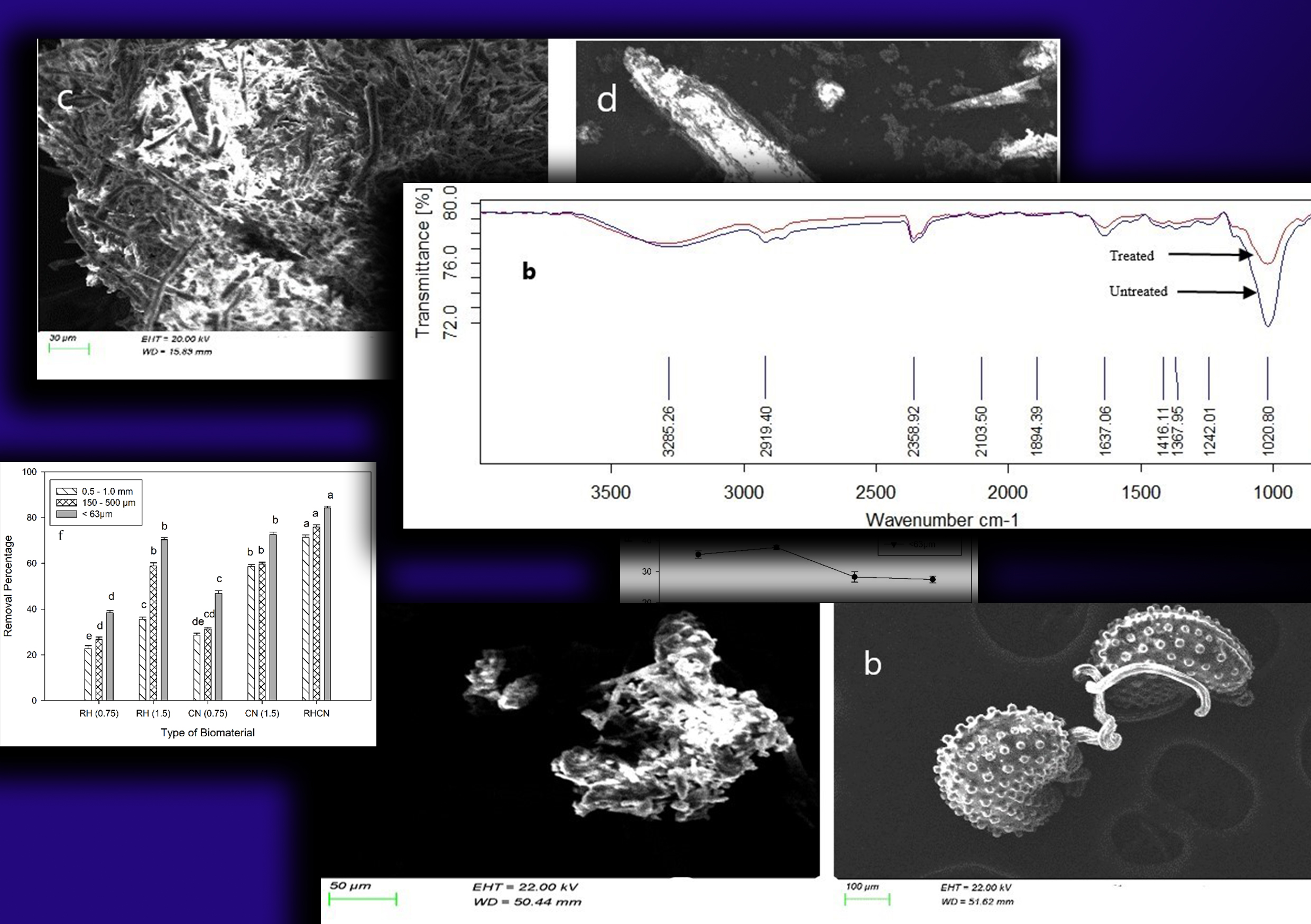The Effect of Particle Sizes of Clearing Nut Seed Powder and Rice Husk Powder for Removal Efficiency of Cd2+ from Synthetic Wastewater
##plugins.themes.academic_pro.article.main##
Abstract
Biomaterials are considered efficient removers of heavy metals from wastewater through biosorption. This study aimed to investigate the effect of particle size of clearing nut seed (CN) and rice husk (RH) for the removal of Cd2+ in synthetic wastewater. Rice husks and CN were thermally treated at 200°C for 3 hours and dried at 30°C for 7 days respectively, powdered (0.5-1.0 mm, 150-500 µm, <63 µm). Batch experiments were conducted to study the effect of particle sizes of RH, CN and RHCN with a 1:1 ratio and contact time (2, 4, 6 and 8 hours) in the removal of Cd2+. The characterization of the biomaterials before and after Cd2+ treatment was analysed using SEM, FT-IR, XRD and XRF. The Cd2+ removal percentage increased with the decrement of the particle size. The highest significant (P< 0.05) Cd2+ removal percentage was observed from the particle size of <63µm followed by 150- 500 µm and 0.5-1.0 mm. The RHCN had the highest significant (P< 0.05) Cd2+ removal percentage of all the adsorbent types. The FT-IR and SEM data revealed the chemical interaction between Cd2+ and biomaterials. Thus, it can be concluded that the reduction of the particle size of RH and CN is effective in the removal of Cd2+.

